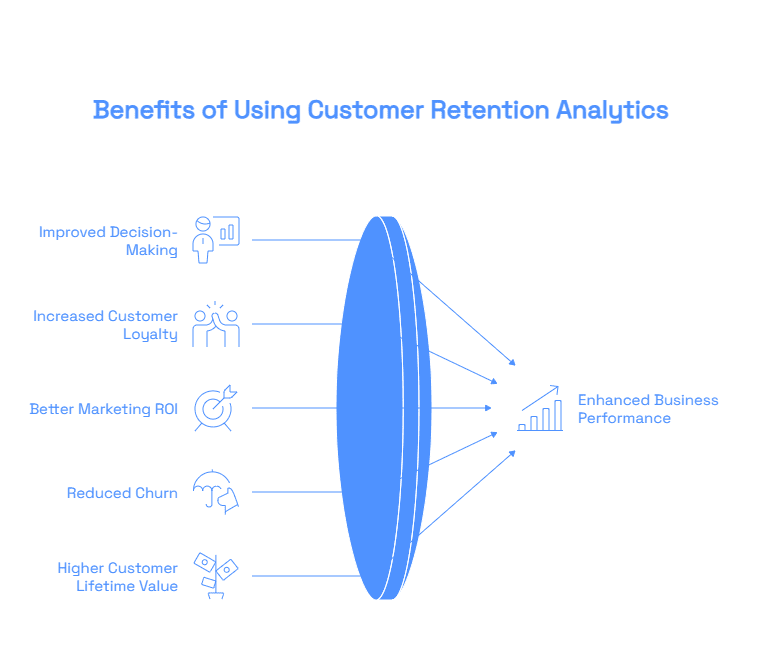Insightful Updates
Stay informed with the latest news and trends.
Loyalty Retention Analytics: Cracking the Code to Customer Devotion
Unlock the secrets of customer loyalty with our expert insights on retention analytics! Boost devotion and watch your business thrive!
Understanding Loyalty Retention Metrics: What Your Data Is Telling You
Understanding Loyalty Retention Metrics is crucial for businesses aiming to cultivate a loyal customer base. These metrics provide insights into customer behavior, helping you identify how many customers return for repeat purchases, the frequency of their visits, and their overall engagement with your brand. By analyzing data such as customer lifetime value (CLV), retention rate, and churn rate, you can effectively gauge the effectiveness of your loyalty programs and marketing strategies. For instance, a low retention rate may indicate issues in customer satisfaction or the need for adjustments in your offerings.
Moreover, focusing on these metrics allows you to tailor your services and improve customer experiences. Collecting and analyzing data over time can help you recognize trends and patterns, allowing for more informed decision-making. Consider tracking the following key metrics:
- Net Promoter Score (NPS) - indicates customer loyalty and satisfaction.
- Repeat Purchase Rate - shows how often customers return for more.
- Customer Churn Rate - measures the percentage of customers who stop buying from you.

Counter-Strike is a popular team-based first-person shooter that has captivated gamers around the world. Players engage in competitive matches where they must work together to complete objectives or eliminate the opposing team. For those looking to enhance their gaming experience, a clash promo code could provide useful benefits.
Top Strategies for Enhancing Customer Loyalty Through Analytics
Enhancing customer loyalty is essential for long-term business success, and utilizing analytics is a powerful strategy to achieve this goal. By analyzing customer behavior, businesses can identify trends and preferences, allowing for more personalized marketing efforts. For instance, tracking customer purchases and engagement can help in segmenting the audience and creating targeted campaigns that resonate with individual needs. Additionally, employing metrics like Net Promoter Score (NPS) can provide insights into customer satisfaction levels and loyalty potential. Businesses can then leverage this data to implement tailored loyalty programs, making customers feel valued and understood.
Another effective strategy is to leverage customer feedback through analytics. By employing tools like surveys and social media listening, companies can gather insights directly from their audience. It’s important to categorize this feedback and analyze it for actionable insights. For example, if customers express concerns about a specific product feature, businesses can prioritize improvements based on frequency and sentiment analysis. Furthermore, implementing continuous feedback loops ensures customers feel their opinions matter, fostering a deeper sense of attachment to the brand. In conclusion, effectively using analytics not only enhances customer loyalty but also drives continuous improvement and engagement over time.
How to Leverage Customer Feedback for Better Retention Rates
Leveraging customer feedback is a powerful strategy for enhancing retention rates. By actively soliciting opinions and reviews from your customers, you not only show them that their voices matter but also obtain valuable insights into your products and services. Implementing a structured approach to gather feedback, such as creating surveys, conducting interviews, or using feedback forms, can help you pinpoint what your customers love and what areas require improvement. This direct line of communication fosters a sense of partnership, encouraging loyalty among your clientele.
Once you've collected feedback, it's crucial to analyze and act on it. Categorize the responses based on common themes and prioritize them according to their impact on customer experience. For instance, if multiple customers express concerns about a specific product feature, consider adjusting it to meet their needs. Sharing these improvements with your customers reinforces their importance to your brand. Moreover, showcasing how you’ve implemented changes based on feedback can significantly elevate customer satisfaction and enhance your overall retention rates.